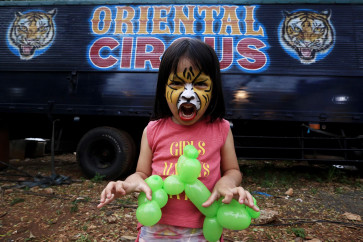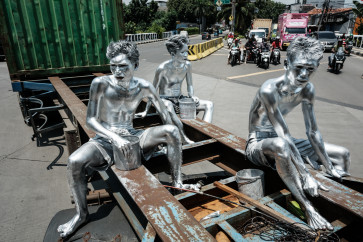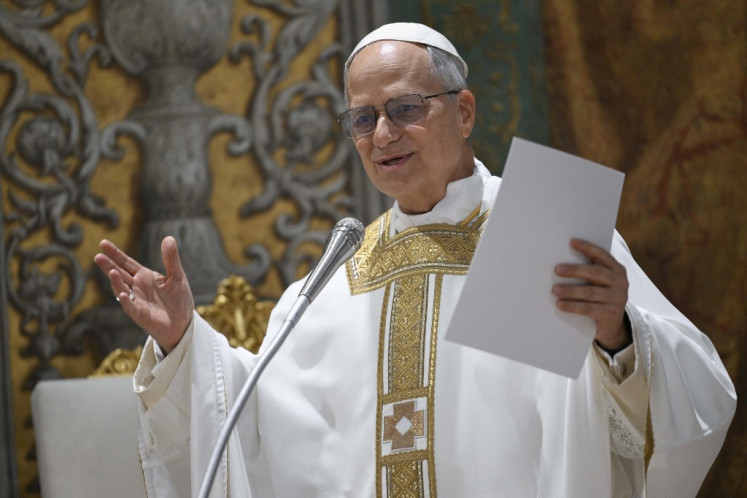Remembering Sukarno's legacy in 2018 Asian Games
Like Jokowi, Sukarno was criticized for his decision to host the Asian Games in Indonesia in 1962.
Change text size
Gift Premium Articles
to Anyone
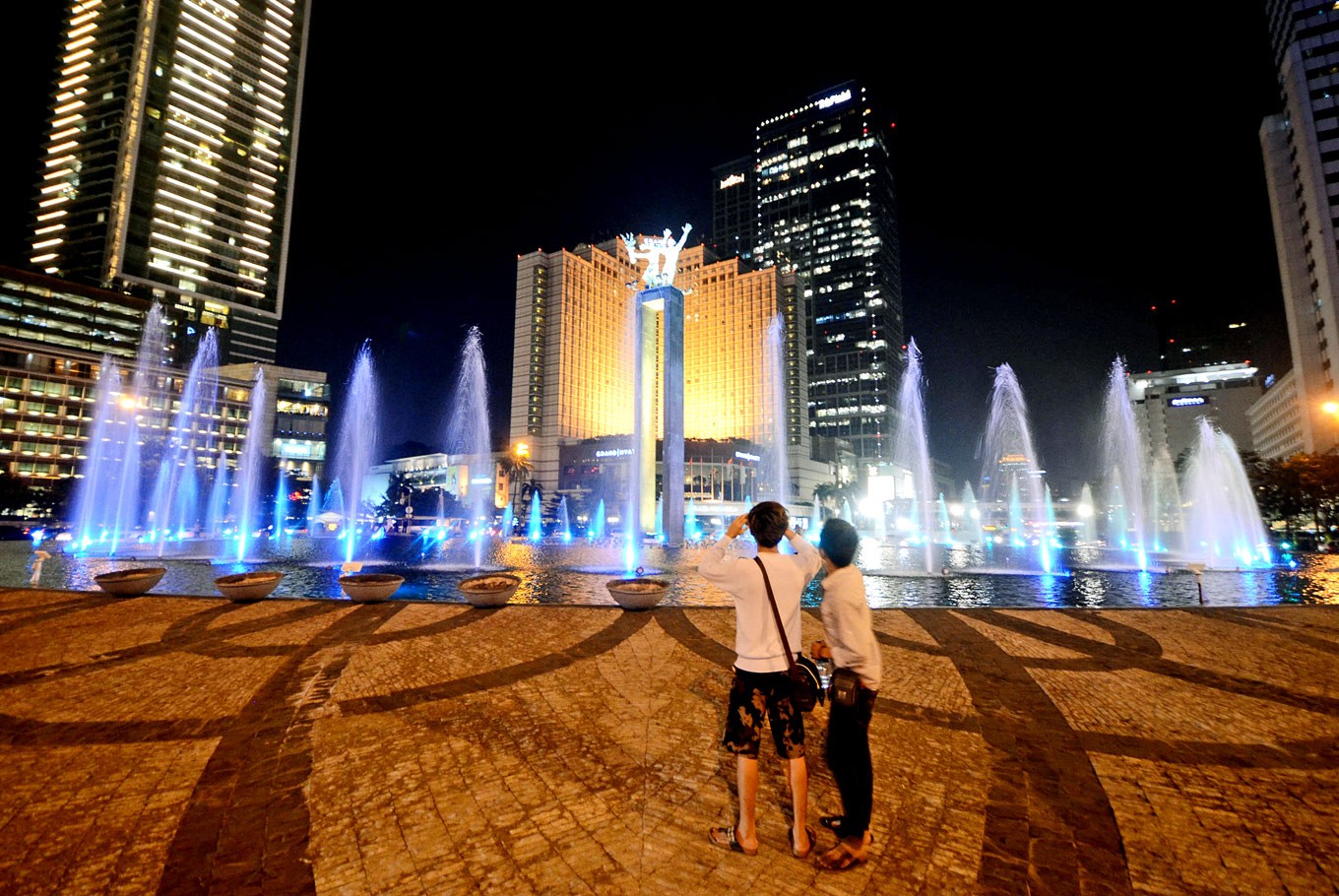 Warm greetings: Visitors take a picture of the Welcome Monument at the Hotel Indonesia traffic circle. (JP/Dhoni Setiawan)
Warm greetings: Visitors take a picture of the Welcome Monument at the Hotel Indonesia traffic circle. (JP/Dhoni Setiawan)
T
he 18th Asian Games, which is currently taking place in Jakarta and Palembang, South Sumatra, is a chance for us to pay tribute to the country’s first president, the charismatic and visionary Sukarno.
After 56 years, Indonesia returns to host the world’s second biggest multisport event amid criticism saying that it was much better to use US$34.4 trillion spent for the Asian Games to help the poor.
Some 11,326 athletes from 45 countries across Asia have flocked to Jakarta and Palembang for the Games. Sukarno’s legacy will witness whether 938 Indonesian athletes can win big this time.
During the fourth Asian Games in 1962, the country managed to be a runner-up with 51 medals, 11 of which were gold, but in the 17th edition in South Korea in 2014, Indonesia ranked only 17th with 20 medals, which included four gold medals.
Like President Joko “Jokowi” Widodo, Sukarno was criticized for his decision to host the Asian Games in Indonesia in 1962.
Hosting a multinational multisport event costs a lot of money but Sukarno did not change his mind, because for him, it was a platform to show that Indonesia was a big nation that deserved recognition.
At that time, the 17-year-old country’s economy was so unstable that the president’s plan was deemed too ambitious.
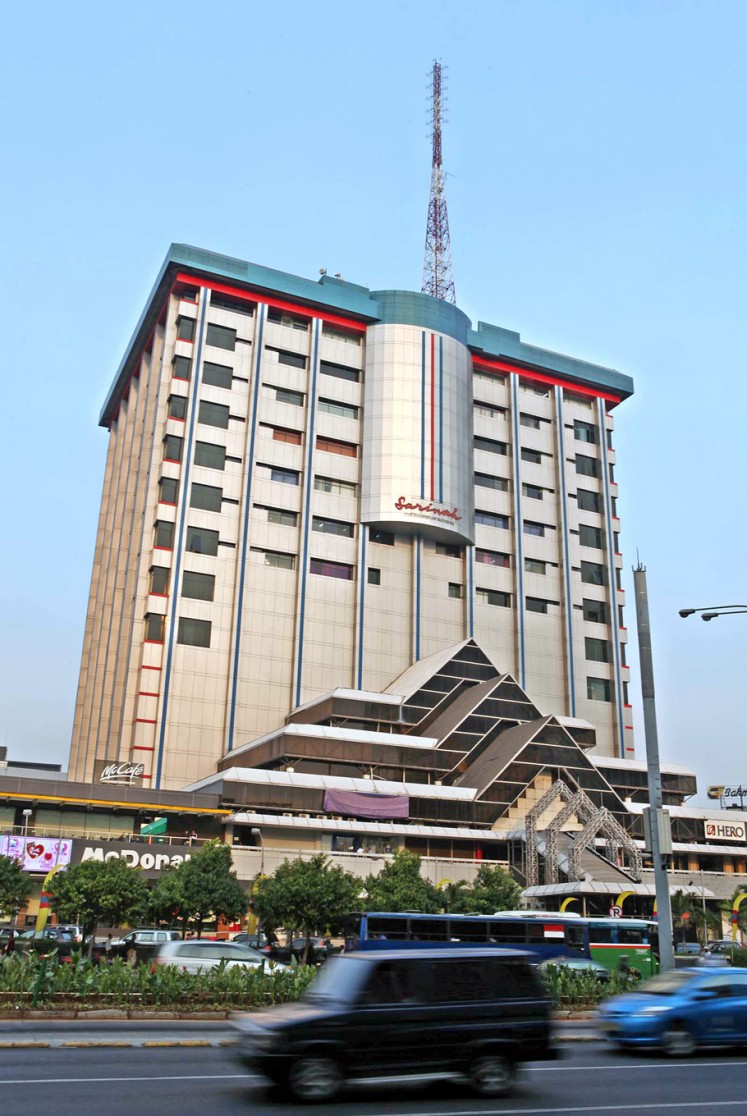
However, if Jakarta hadn’t hosted the event, there might not have been a Sarinah department store, a Welcome Monument, Hotel Indonesia, a Semanggi Interchange, Gelora Bung Karno Stadium and state-owned television station TVRI, which played a major part in introducing news and information to Indonesians before the internet era.
Dubbed “the Indonesian Emporium” when it first opened, Sarinah department store was once the tallest building in Indonesia. It remains a historical site until this day because of its special ties to Sukarno.
“It was named after Sarinah after Sukarno’s childhood nanny,” said Ira Lathief, founder and guide of the Jakarta Creative Tourism community, which hosts walking tours of the capital.
The Welcome Monument at the Hotel Indonesia traffic circle is also one of Sukarno’s most important legacies. Depicting a man and woman waving in a welcoming gesture, it was designed by former Jakarta deputy governor Henk Ngantung and was created by sculptor Edhi Sunarso.
The statue was meant to welcome 1,460 athletes from 17 countries in 1962. Like them, the 2018 Asian Games athletes will be able to see the monument clearly because a bridge that previously blocked motorists’ view of the monument was ordered to be removed by Jakarta Governor Anies Baswedan.
After visiting Sarinah, Jakarta Creative Tourism participants then headed to Hotel Indonesia, the country’s first five-star hotel built by Sukarno for Asian Games athletes to stay in during the 1962 Games.

In the hotel, which is now named Hotel Indonesia Kempinski, Sukarno, who was also an avid art lover, introduced Indonesia’s culture through works of art.
“Sukarno liked to collect paintings. Some of them are still on display here,” said Hotel Indonesia Kempinski public relations executive Ananda Wondo.
A 1961 painting titled Flora and Fauna of Indonesia by Chinese-Indonesian painter Lee Man Fong remains in mint condition. According to Ananda, it is believed that the artist made the painting as payment for a debt he had with Sukarno.
Other old artworks in the hotel include a carving by Soerono that depicts young Indonesian women clad in various traditional dresses and G. Dharta’s carving of traditional dances.
Old photographs of Sukarno officially opening the hotel on Aug. 5, 1962, are also on display. A dinner set and the scissors used during the ribbon-cutting ceremony are showcased on the hotel’s 10th and 11th floors, respectively.
After Hotel Indonesia, the trip’s participants went to the Bendungan Hilir area to see up close the Semanggi Interchange, the country’s first overpass designed in 1961 by former public works minister Sutami under the instruction from Sukarno to connect Jl. Sudirman and Jl. Gatot Subroto for the Asian Games.

When designing the bridge, Sutami was inspired by a semanggi (four-leaf clover), which in turn inspired its name.
“Sukarno constructed the bridge to anticipate possible traffic congestion in the future, but he once said that the semanggi plant itself also symbolizes unity,” Ira said.
If Sukarno used the semanggi as a symbol of unity, Jokowi delivered the same message through the names of the three 2018 Asian Games mascots.
They are: the bird of paradise Bhin Bhin from Papua, which embodies strategy; the deer Atung from Bawean Island, representing speed; and the one-horned Javan rhino Kaka from Ujung Kulon, highlighting power.
“They are named after Bhinneka Tunggal Ika,” Ira said, referring to the country’s national motto, Unity in
Diversity.
Near the Semanggi Interchange, there are many statues depicting the mascots in costumes representing the most popular sports in Asia, from gymnastics, martial arts and cricket, to table tennis and soccer. Many people can be seen taking photographs with them during Car Free Day on Sunday morning.
Bhin-Bhin, Atung and Kaka not only enliven the quadrennial competition, they also encourage people to care more about the rare species that are endemic to the Indonesian archipelago.
Native to Bawean Island in East Java, the Bawean deer is categorized critically endangered by the International Union for Conservation of Nature (IUCN) because among other reasons, their antlers have become the target of illegal hunting.
Like the Bawean deer, some species of the bird of paradise, known for their beautiful, colorful plumage, are also endangered due to poaching.
Javan rhinos are also close to extinction, with just around 60 believed to exist in the wild. Their horns, highly valued in traditional Chinese and Korean medicine, are still widely hunted and sought-after.
The three mascots represent the eastern, central and western regions of Indonesia, boasting designs such as the traditional Palembang flower motif on Kaka’s neckpiece, a sarong with Jakarta’s tumpal pattern worn by Atung and Bhin-Bhin’s vest adorned with Papua’s asmat motif.

